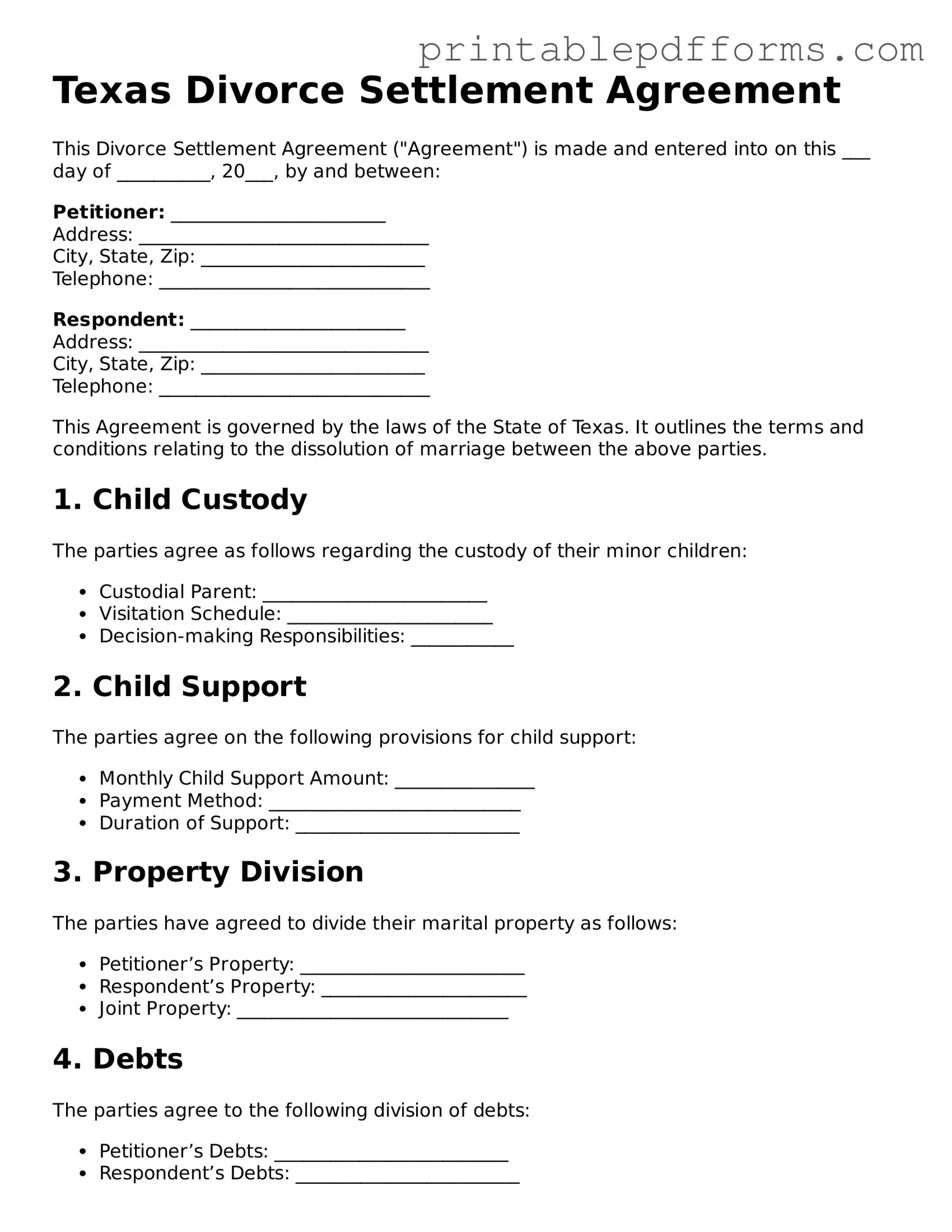Texas Divorce Settlement Agreement
This Divorce Settlement Agreement ("Agreement") is made and entered into on this ___ day of __________, 20___, by and between:
Petitioner: _______________________
Address: _______________________________
City, State, Zip: ________________________
Telephone: _____________________________
Respondent: _______________________
Address: _______________________________
City, State, Zip: ________________________
Telephone: _____________________________
This Agreement is governed by the laws of the State of Texas. It outlines the terms and conditions relating to the dissolution of marriage between the above parties.
1. Child Custody
The parties agree as follows regarding the custody of their minor children:
- Custodial Parent: ________________________
- Visitation Schedule: ______________________
- Decision-making Responsibilities: ___________
2. Child Support
The parties agree on the following provisions for child support:
- Monthly Child Support Amount: _______________
- Payment Method: ___________________________
- Duration of Support: ________________________
3. Property Division
The parties have agreed to divide their marital property as follows:
- Petitioner’s Property: ________________________
- Respondent’s Property: ______________________
- Joint Property: _____________________________
4. Debts
The parties agree to the following division of debts:
- Petitioner’s Debts: _________________________
- Respondent’s Debts: ________________________
5. Alimony/Spousal Support
The parties will abide by the following terms regarding spousal support:
- Amount of Alimony: ________________________
- Payment Schedule: _________________________
6. Miscellaneous Provisions
The parties also agree to the following additional terms:
- Health Insurance Coverage: __________________
- Tax Deductions: ____________________________
This Agreement constitutes the entire understanding between the parties. Any modifications must be executed in writing and signed by both parties.
IN WITNESS WHEREOF, the parties have executed this Divorce Settlement Agreement as of the date first above written.
___________________________
Petitioner Signature
___________________________
Respondent Signature
Date: ______________________
